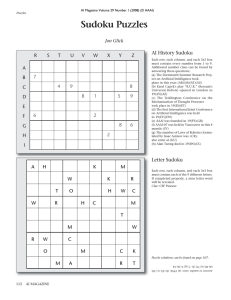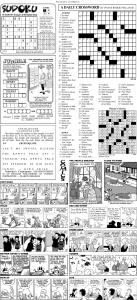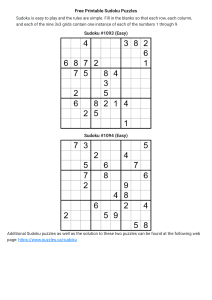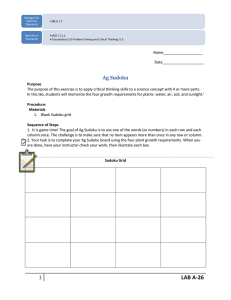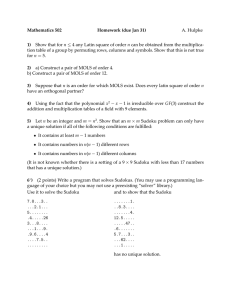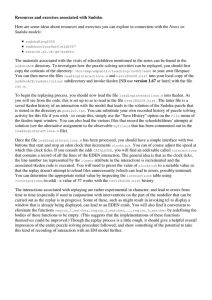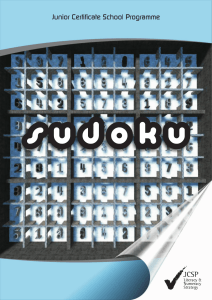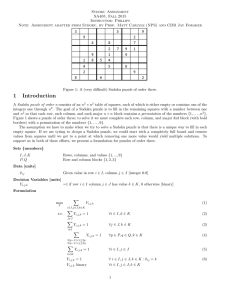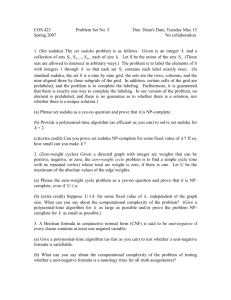Thinking logically - Topic exploration pack - Learner activity
advertisement
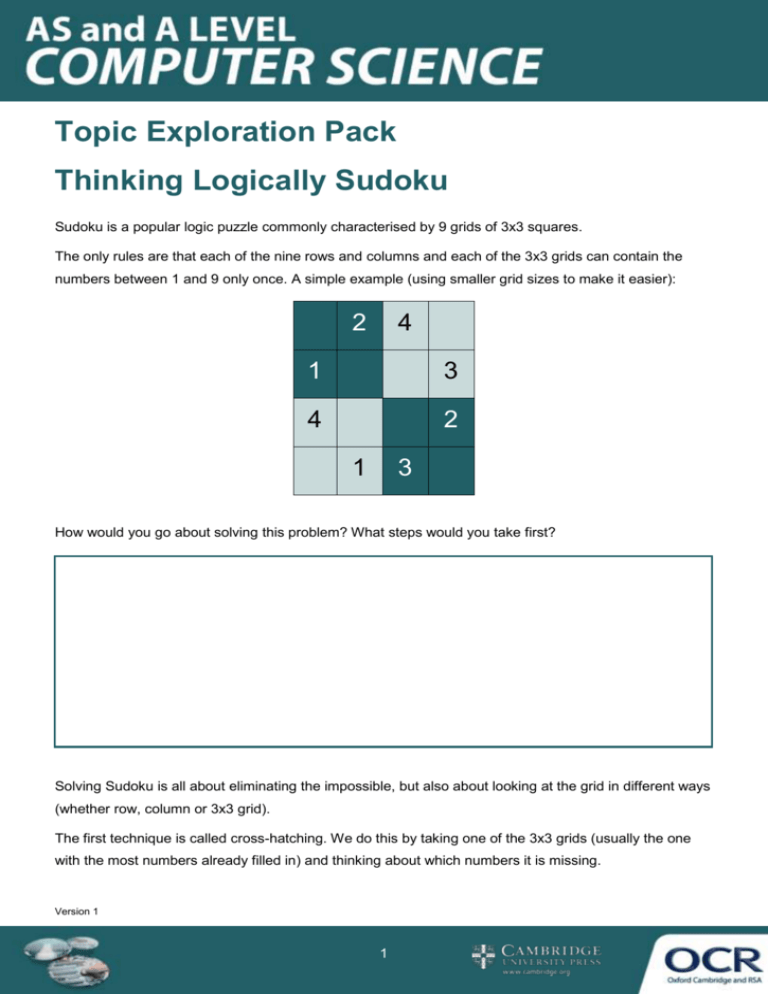
Topic Exploration Pack Thinking Logically Sudoku Sudoku is a popular logic puzzle commonly characterised by 9 grids of 3x3 squares. The only rules are that each of the nine rows and columns and each of the 3x3 grids can contain the numbers between 1 and 9 only once. A simple example (using smaller grid sizes to make it easier): 2 4 1 3 4 2 1 3 How would you go about solving this problem? What steps would you take first? Solving Sudoku is all about eliminating the impossible, but also about looking at the grid in different ways (whether row, column or 3x3 grid). The first technique is called cross-hatching. We do this by taking one of the 3x3 grids (usually the one with the most numbers already filled in) and thinking about which numbers it is missing. Version 1 1 If we consider the top left, the numbers missing are 3 and 4. The 4 cannot go in the top left because of the 4 in the top row. That means that we have to put 4 in the bottom right. That leaves us with the gap filling exercise, as the last spot must be a 3. You could use the same method to complete the rest of the grid. 3 2 1 4 4 3 4 2 1 3 Now try solving this problem. 5 3 7 6 1 9 9 5 8 6 8 6 4 8 7 3 3 1 2 6 6 2 4 1 8 Version 1 2 8 9 5 7 9 What are the steps you took to complete this Sudoku? Write some of them down below. If you get stuck, there is a list of tactics at this page: http://www.paulspages.co.uk/sudoku/howtosolve/index.htm How might you start to make a program to solve any Sudoku puzzle? What sort of data structures would you use? Would the computer be able to do everything that you did to solve the problem? Many people have already implemented the code for this, although they may all take different approaches. One person is http://norvig.com/sudoku.html Version 1 3 Answers to problems 5 3 4 6 7 8 9 1 2 6 7 2 1 9 5 3 4 8 1 9 8 3 4 2 5 6 7 8 5 9 7 6 1 4 2 3 4 2 6 8 5 3 7 9 1 7 1 3 9 2 4 8 5 6 9 6 1 5 3 7 2 8 4 2 8 7 4 1 9 6 3 5 3 4 5 2 8 6 1 7 9 Version 1 4
